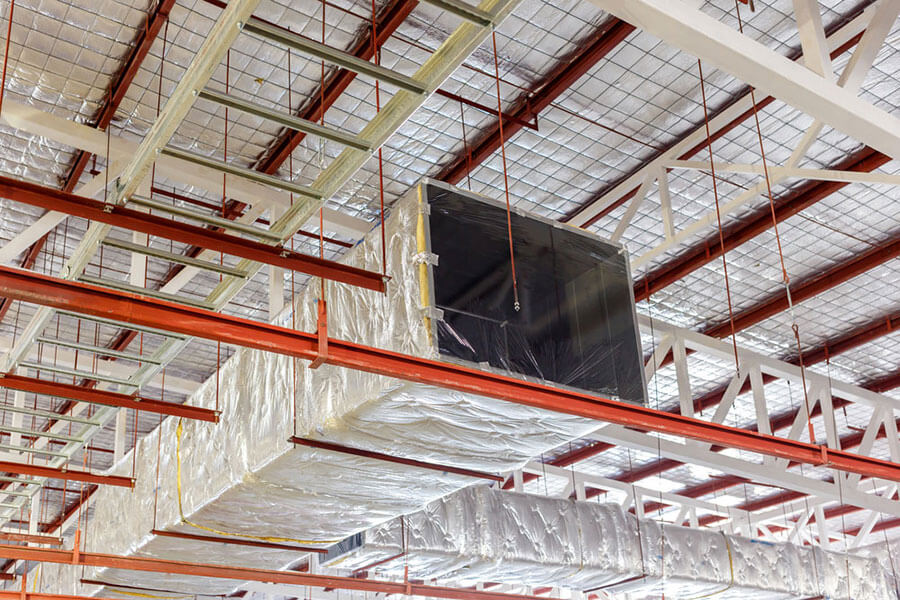How Commercial Insulation Protects Investments
businesses can transform their structural assets into high-performance environments that minimize energy consumption, reduce maintenance costs, and enhance overall building longevity.
Commercial insulation stands as a critical strategic investment for businesses seeking to optimize building performance, energy efficiency, and long-term cost management. Far more than a simple protective layer, modern insulation systems represent a sophisticated approach to building science that delivers comprehensive protection and substantial economic benefits.
The strategic importance of commercial insulation extends beyond basic temperature control. It serves as a multifaceted solution that addresses complex challenges in building performance, environmental sustainability, and operational efficiency. By creating advanced thermal barriers, businesses can transform their structural assets into high-performance environments that minimize energy consumption, reduce maintenance costs, and enhance overall building longevity.
Comprehensive Performance Landscape

Commercial insulation technologies have evolved dramatically in recent years, offering unprecedented capabilities for managing thermal performance. The landscape of insulation solutions now encompasses a diverse range of materials and technologies, each designed to address specific environmental and structural challenges.
Advanced Insulation System Classifications
|
Insulation Type |
Thermal Performance |
Key Advantages |
Ideal Application Environments |
Typical Cost per Square Foot |
|
Spray Foam Insulation |
Exceptional R-value (6.0-7.0 per inch) |
Superior air sealing, moisture resistance, structural reinforcement |
Industrial complexes, data centers, pharmaceutical facilities |
$1.50 - $3.00 |
|
Fiberglass Insulation |
Moderate R-value (2.2-4.3 per inch) |
Cost-effective, lightweight, non-combustible |
Office buildings, retail spaces, educational institutions |
$0.50 - $1.50 |
|
Mineral Wool |
High thermal resistance |
Outstanding fire resistance, acoustic dampening |
Healthcare facilities, high-traffic commercial spaces |
$1.00 - $2.50 |
|
Polyisocyanurate (Polyiso) |
Superior thermal efficiency |
Excellent compressive strength, minimal thermal bridging |
Roofing systems, cold storage facilities |
$1.25 - $2.75 |
|
Closed-Cell Foam |
Exceptional moisture barrier |
High density, structural reinforcement |
Marine environments, extreme climate zones |
$1.75 - $3.50 |
Strategic Selection Considerations
Selecting the optimal commercial insulation requires a comprehensive approach that goes beyond simple thermal performance metrics. Building managers must develop a holistic understanding of their specific environmental, structural, and operational requirements.
The process of insulation selection involves careful evaluation of multiple critical factors. Thermal resistance remains a primary consideration, but modern approaches demand a more nuanced perspective. Moisture management capabilities, fire safety ratings, installation complexity, and long-term durability all play crucial roles in determining the most appropriate insulation solution.
Environmental impact has become increasingly important in recent years. Organizations now recognize that insulation choices directly contribute to their sustainability goals, carbon footprint reduction, and overall environmental responsibility. This shift has driven innovation in insulation technologies, pushing manufacturers to develop more sustainable, high-performance solutions.
Comprehensive Technical Performance Analysis
The technical performance of commercial insulation can be assessed through a multi-dimensional lens. Thermal conductivity, compressive strength, moisture resistance, and fire ratings provide a comprehensive picture of a material's capabilities.
|
Performance Parameter |
Measurement Specification |
Optimal Performance Range |
Industry Standard |
|
Thermal Conductivity |
Watts per meter-Kelvin (W/mK) |
0.022 - 0.040 |
ASTM C518 |
|
Compressive Strength |
Kilopascals (kPa) |
10 - 200 |
ASTM D1621 |
|
Moisture Absorption |
Percentage by volume |
< 3% |
ASTM C272 |
|
Fire Resistance Rating |
ASTM E84 Classification |
Class A (Lowest flame spread) |
UL 723 |
|
Sound Transmission Class (STC) |
Decibel reduction |
45 - 55 |
ASTM E90 |
|
Vapor Permeance |
Perms |
< 1.0 |
ASTM E96 |
Economic Impact and Energy Optimization
Commercial insulation represents far more than a simple building maintenance expense. It is a strategic investment with profound economic implications. Organizations that approach insulation as a critical performance optimization tool can realize substantial financial benefits.
Comprehensive studies consistently demonstrate the remarkable potential for energy cost reduction. Advanced insulation technologies can generate savings that significantly impact an organization's bottom line. By minimizing heat transfer, reducing energy consumption, and improving overall building performance, businesses can achieve remarkable economic outcomes.

The financial advantages extend beyond immediate energy savings. Improved insulation contributes to reduced maintenance costs, enhanced building durability, and increased property value. Organizations can expect a typical return on investment within three to five years, with continued benefits throughout the building's lifecycle.
Performance Optimization Strategies
Successful insulation implementation requires a proactive and strategic approach. Organizations should view insulation as a dynamic system rather than a static solution. This means developing comprehensive energy management protocols, utilizing advanced diagnostic technologies, and continuously monitoring performance.
Thermal imaging provides a powerful tool for understanding insulation effectiveness. By conducting regular diagnostics, businesses can identify potential performance gaps, address emerging issues, and optimize their thermal management strategies. Integration with smart building management systems allows for real-time performance tracking and predictive maintenance.
Pre-Implementation Considerations
Implementing an effective commercial insulation strategy demands meticulous planning and comprehensive assessment. Organizations must conduct thorough evaluations of their existing building envelope, local climate conditions, and specific operational requirements.
Compliance with local and national building codes represents a critical consideration. Beyond regulatory requirements, businesses must also consider the broader implications of their insulation choices. This includes assessing potential impacts on occupant comfort, workplace productivity, and overall environmental sustainability.
Advanced Installation Dynamics
Professional installation represents the critical bridge between insulation technology and actual performance. Even the most advanced insulation materials can fail to deliver optimal results if not implemented with precision and expertise.
The installation process involves much more than simply applying insulation material. It requires comprehensive surface preparation, advanced application methodologies, and rigorous quality control. Thermal bridging mitigation, uniform coverage, and minimal performance gaps are essential considerations that demand specialized expertise.
Commercial Insulation FAQ
Q: What is the typical lifespan of commercial insulation systems? A: High-quality commercial insulation typically performs optimally for 20-30 years, with recommended comprehensive evaluations every 5-7 years to ensure continued peak performance.
Q: How do different insulation types impact building acoustics? A: Specialized insulation materials like mineral wool provide exceptional sound dampening, reducing noise transmission by up to 50% in commercial environments.
Q: What role does insulation play in sustainability certifications? A: Premium insulation solutions directly contribute to green building certifications like LEED, helping organizations demonstrate environmental responsibility and reduce carbon footprints.
Q: Are there industry-specific insulation requirements? A: Specialized sectors such as healthcare, food processing, and pharmaceutical manufacturing have unique insulation standards driven by stringent regulatory and environmental control requirements.
Q: How do emerging technologies impact commercial insulation? A: Innovative materials and smart integration technologies are continuously expanding insulation capabilities, introducing advanced features like self-healing properties and enhanced environmental responsiveness.
Make the Right Decision
Commercial insulation transcends traditional building maintenance, representing a sophisticated strategic investment. By carefully evaluating specific organizational requirements, consulting with insulation experts, and prioritizing long-term performance metrics, businesses can transform their built environments into highly efficient, sustainable assets.
Author and Reviewer:
Author: Bob Gasca attended his first spray foam training in 2007 and has continued to pursue yearly training to stay current with the latest technology and practices. He is a certified Spray Foam Master Installer through the SPFA and a member of the SPFA. Additionally, Bob serves as a Spray Foam Worldwide Ambassador, sharing information with spray foam professionals globally. Recently, he returned from a building science training, where he expanded his knowledge on how weather conditions affect home performance, helping him better diagnose and improve home health for families. Bob specializes in finding solutions to complex moisture and air infiltration issues.
Reviewer: Noah Gonzalez reviewed this article and drew on 9 years of experience to offer suggestions that make the guidance more directly useful for insulation contractors.














































































































![Are AI Chatbots Replacing Search Engines? AI vs Google [New Research]](https://www.orbitmedia.com/wp-content/uploads/2025/05/How-often-are-we-using-AI-chatbots_.webp)

















































